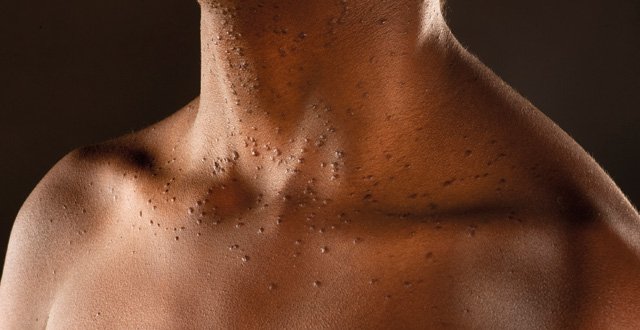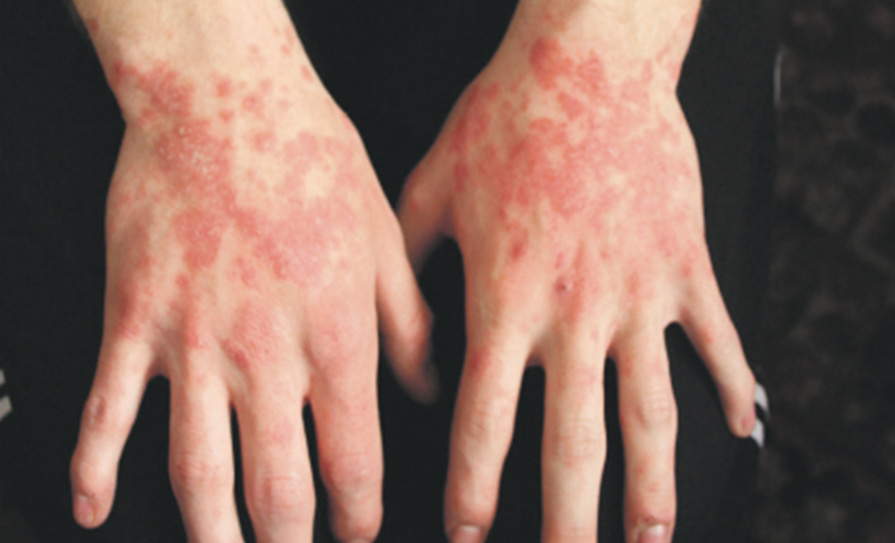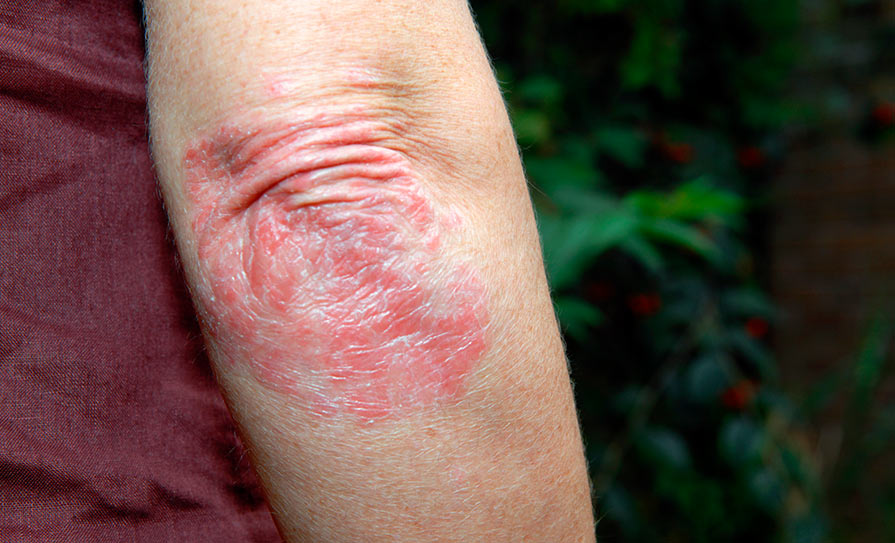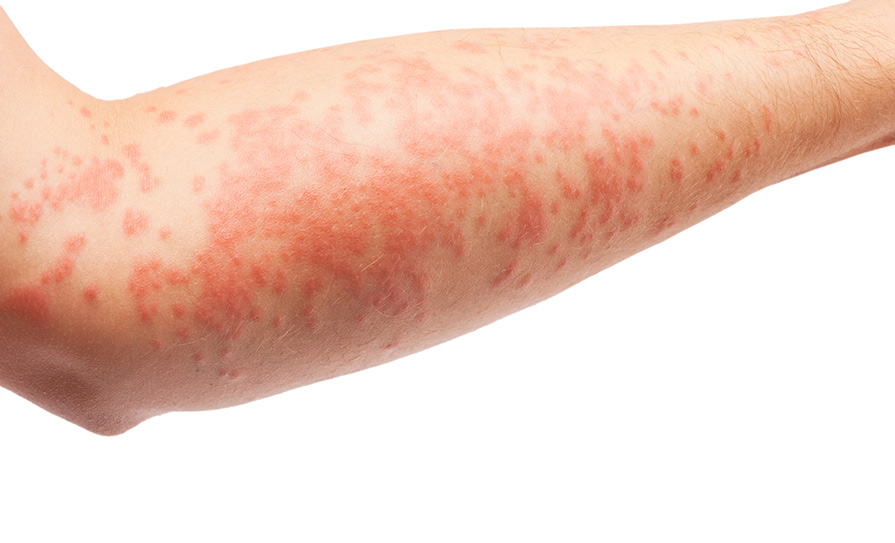The challenge in defining acne and rosacea
The 22nd Primary Care Dermatology Society of Ireland (PCDSI) Annual Scientific Conference, which was held in the Galmont Hotel in Galway from 21-23 February, opened with a special symposium on acne and rosacea.
Opening the event, GP and PCDSI Chairperson Dr Karen Reidy stated that acne and rosacea are common problems in general practice, but can often be difficult to diagnose and manage.
Consultant Dermatologist at the Mater Private Hospital, Dublin, Prof Frank Powell, who has a special interest in rosacea, was first to the podium.
He spoke on the topic ‘Rosacea — pathogenesis and clinical presentation’ and began by discussing the definition of rosacea.
The problem, he told delegates, is that people often have a vague notion of what rosacea actually is.
Commonly referred to as ‘redness in the face’, Prof Powell argued that the use of such a broad, wide-ranging term for the condition has perhaps resulted in several disorders of separate pathogenic pathways being diagnosed as rosacea.
He postulated that this has led to a poor understanding of the pathogenesis of the disorder and the lack of a structured approach to treatment.
He looked at the four subtypes of rosacea classified by the US National Rosacea Society, including erythematotelangiectatic (ETTR) rosacea, papulopustular (PPR) rosacea, phymatous rosacea (also known as rhinophyma) and ocular rosacea.
Prof Powell noted that frequent flushing is a characteristic of ETTR but maintained that not all ‘flushers’ actually have rosacea. Rosacea is more common in pale-skinned, blue-eyed individuals. Around 14 million have the condition in the US, while almost 3 per cent of people in Ireland have rosacea.
Common abnormalities of the sebaceous glands of the skin present in rosacea, Prof Powell noted. Another theory regarding the pathogenesis suggests a significant association between demodex infestation and rosacea, Prof Powell also pointed out.
The pathogenesis and clinical presentation of acne
A comprehensive overview on acne — pathogenesis and clinical presentation — was presented by Consultant Dermatologist at Beaumont, Connolly and Bon Secours Hospitals, Dr Síona Ní Raghallaigh.
Dr Ní Raghallaigh outlined the four main pathogenic processes in acne: Altered keratin site differentiation; increasing production — androgens; colonisation by P.Acnes; and inflammation.
There is most likely an interaction between all four processes, with dietary and genetic influences also factors in acne, Dr Ní Raghallaigh said.
One of the questions regarding acne commonly asked by patients is in relation to diet. An example of a question often posed by parents is: ‘Is it something he’s eating, he’s got a terrible diet?’, Dr Ní Raghallaigh related.
“There is probably a connection with diet and acne, in particular with milk,” Dr Ní Raghallaigh told delegates.
Milk and acne is an evolving story, she said, which began with a US-based patient recall study that found an association between milk and acne. Other studies have since found a link between the two, according to Dr Ní Raghallaigh.
Diet and acne remain a complicated issue, but there is most likely a hormonal influence with milk, she suggested.
Furthermore, studies show that an elevated BMI in women is associated with acne development, but not in men. Stress in the pathogenesis of acne is also “something to bear in mind”, Dr Ní Raghallaigh noted.
Moving on to the differences between acne and rosacea, Dr Ní Raghallaigh said there are no comedones in rosacea, but there are in acne.
She went on to examine the many different types of acne, including neonatal acne (two weeks-three months), which affects about 2 per cent of health neonates and does not lead to scarring. In comparison, infantile acne (two-12 months) can cause scarring.
Psychological impact of acne and rosacea should be recognised
The psychological impact of acne and rosacea is an important aspect to consider when treating patients with these conditions, Dr Bart Ramsay, Consultant Dermatologist, University Hospital Limerick, advised PCDSI delegates.
Speaking at the acne and rosacea symposium, Dr Ramsay explored the psychological impact of acne and rosacea on patients and the relationship between acne and depression and stress and rosacea.
He examined four specific themes: The association between acne and depression and suicide; the link between rosacea and psychosocial upset (especially in males); patient testimony in helping to clarify “where they’re at”; and finally, the three conditions that can lie beneath acne and rosacea, including body dysmorphic disorder, eating disorders and acne excoriée.
He highlighted a 1997 paper of 16 patients — seven men and nine women who took their own lives — which found that the top-two conditions represented in the suicides were acne and body dysmorphic disorder. Facial scarring in male patients was another factor identified. Some patients who had “skin failure” became so disturbed that they took their own lives, the study found.
The average age of the seven acne patients who took their own lives was 20 years. The patients had acne for at least three years and a poor response to therapy was recorded, Dr Ramsay said.
Separately, a paper by Prof Sam Shuster, a UK-based professor of dermatology, showed that people with chronic acne had low self-esteem and mood prior to commencing treatment on isotretinoin. Dr Ramsay noted that when treated, the majority of patients’ mood improved. A minority, however, recorded no improvement in mood, he cautioned. Another paper has found that severe acne is a risk factor for suicidal ideation, he added.
Looking at rosacea, Dr Ramsay pointed out that clinical severity does not correlate with psychological distress, according to data.
Rosacea is associated with social stigma and lower self-esteem and can have an adverse impact on a person’s quality-of-life. But quality-of-life improves with successful rosacea treatment, studies have shown. In helping to determine the state of mind of a patient with acne or rosacea, Dr Ramsay advised that patient questionnaires can be very helpful for clinicians.
Link between depression and isotretinoin questioned
Consultant dermatologist, St John’s Institute of Dermatology, UK, Dr Natalie Attard questioned the link between isotretinoin and depression at the Primary Care Dermatology Society of Ireland (PCDSI) Annual Scientific Conference in Galway.
Isotretinoin, a synthetic vitamin A analogue, is one of the most effective anti-acne therapies available, according to Dr Attard. However, the drug has been the subject of much controversy since it was first introduced in the early 1980s and has developed “a bad reputation”, Dr Attard argued.
In a presentation titled ‘Isotretinoin — facts and fallacies’, Dr Attard examined reported links between the drug and depression. In the late 1990s, a warning was added to patient information leaflets accompanying the drug, outlining the risk of depression.
However, Dr Attard questioned whether or not isotretinoin increased the risk of depression and suicide above that of the acne itself (the association between acne and depression was discussed in a separate talk by Dr Bart Ramsay).
She said that while it was difficult to rule out a link between the two, based on available data, isotretinoin has not been proven to cause depression. Therefore, the drug can be prescribed with caution to patients with a history of depression, she maintained.
Baseline psychiatric treatment is important before commencing isotretinoin treatment and patients should be asked about their mood and counselled on the pros and cons of therapy, she stated.
Isotretinoin is contraindicated in pregnancy and two forms of contraception for at least one month prior to commencing treatment is advised, Dr Attard said.
Topical therapies and oral antibiotics in acne discussed
The most effective topical therapies and oral antibiotics, which have become mainstays in the management of acne, were highlighted by Prof Jerry Tan, Adjunct Professor, Schulich School of Medicine and Dentistry, Department of Medicine, University of Western Ontario, Canada, in two separate talks at the PCDSI acne and rosacea symposium.
A member of the expert committee of the National Rosacea Society, Prof Tan covered several topics, including appropriate use based on clinical severity, individual patient features, mitigation of risk, including intolerance to local application, and reducing the risk of antibiotic resistance.
In his first talk on topical, evidence-based therapies, Prof Tan stressed the importance of maximising adherence in order to achieve the best possible outcomes in acne treatment.
Factors such as accessibility, application, adverse events, appropriate selection and anticipated timelines should always be considered by clinicians, he said.
Acne, he stated, is the eighth-most common condition seen worldwide and can range in type and severity. Evidence-based guidelines recommend topical therapies for most first-line acne treatment, Prof Tan noted. What patients can afford and what is available are important considerations when prescribing topical agents, he added.
In terms of the application of topical agents, he recommended “field coverage”, not spot treatment. Typically, a pea-sized amount will deliver about two palms’ coverage. The face requires about four palms’ coverage. The medication should be applied before any moisturisers and left to absorb for about 15 minutes before any other creams/agents are applied, he suggested.
Advice on how to mitigate and prevent adverse events, such as the risk of irritation and dryness from agents, was also covered by Prof Tan.
Agents, for instance, could be used every other night in some cases to reduce erythema, stinging and burning.
Signs of irritation usually peak within one-to-two weeks. Between two-to-four weeks, some improvement should be seen, he said.
Medication adherence requires reminders and patient encouragement, Prof Tan maintained. To achieve this, he advised that a weekly email regarding treatment can be extremely beneficial for patients.
In his next talk on oral antibiotic use in the treatment of acne, Prof Tan said that antibiotic over-use is a concern, but that a treatment equal to or better than oral antibiotics had yet to be found.
Treating acne and rosacea in patients with skin of colour
Prof Jerry Tan highlighted the challenges in treating acne and rosacea in patients with skin of colour at the PCDSI annual meeting in Galway recently.
Making a diagnosis is challenging due to the modifying effect of pigment against underlying inflammation. Management can also prove difficult due to the post-inflammatory or macular hyperpigmentation, Prof Tan told delegates.
It is almost impossible to see red against a darker background, which is why patients should be questioned about pain, heat and swelling during consultations, he recommended.
Spectral subtraction imaging (RBX) is used for patients with skin of colour who have acne, including when making a decision on when to stop isotretinoin, Prof Tan explained.
The tool has proved highly beneficial in acne diagnosis and management, as in the past there was a widely-held view that rosacea did not exist among Asian patients, Prof Tan revealed.
RBX allows clinicians to see what is below the skin and, therefore, enables doctors to treat the condition effectively, he explained.
In a separate talk on acne in the adult female, GP Dr Johnny Loughnane revealed that the condition has become more common in recent times.
In 80 per cent of cases, post-adolescent female acne fails to respond to conventional therapy. Furthermore, such cases involve a 30 per cent relapse rate with isotretinoin treatment, he noted.
Hormonal treatment is the most effective agent for adult female acne, he advised, but a positive response to treatment can take up to six months.
He provided an overview of acne in pregnancy, severe acne in females, the advantages and disadvantages of different hormone regimens, and spironolactone as a treatment option.
Treating actinic keratosis and Bowen’s disease can help prevent skin cancer
An informative overview of the most effective treatments for actinic keratosis (AK) and Bowen’s disease was provided to PCDSI delegates by Consultant Dermatologist at Guy’s Hospital, UK, Dr Clare Kiely.
Dr Kiely advised that recognising and effectively treating the conditions can help to prevent skin cancer development.
She noted that data from the Irish Cancer Society predicts that by 2040, there will be 19,000 cases of skin cancer in Ireland annually.
AK and Bowen’s disease, she said, already represent a huge burden on healthcare systems. Some 10 per cent of dermatology appointments involve a diagnosis of AK.
Dr Kiely stated that he numbers are vast, citing NICE data that shows 23 per cent of people over the age of 40 have an AK.
When diagnosing an AK, she suggested that as some lesions are subtle, it is important to feel the skin for roughness.
She said 15-to-60 per cent of AKs can regress, while 15-to-33 per cent can recur. Others will remain static, while about 0.5 per cent per year will progress to a squamous cell carcinoma.
All AKs should be treated and topical agents, while destructive therapies, can also be used, Dr Kiely said.
Cryotherapy is the go-to treatment for AK, as it has cure rates of up to 98 per cent. However, cryotherapy can damage healthy skin cells and leave scars, she warned. Clinicians should also remain cautious on using cryotherapy on the lower legs because of the risk of ulceration.
Other treatments include fluorouracil, imiquimod, ingenol mebutate and photodynamic therapy (PDT).
Fluorouracil is the most effective treatment in terms of reduction and inflammation is a healthy part of treatment, she said.
In the treatment of Bowen’s disease, topical treatments are less effective, which is why cryotherapy, curettage and cautery, and PDT are recommended, she advised.
Steps to prevent skin cancer highlighted at annual meeting
Information on primary skin cancer prevention for the general population and secondary skin cancer prevention for high-risk individuals was highlighted by Consultant Dermatologist, St John’s Institute of Dermatology, UK, Dr Natalie Attard at the PCDSI Annual Scientific Conference.
The incidence of skin cancer is increasing globally and has emerged as a genuine public health concern in recent decades.
In Ireland, there are about 11,000 cases of skin cancer annually and exposure to ultraviolet radiation from the sun is the main cause of skin cancer development.
Dr Attard outlined that evidence shows that sunburn to skin in a person’s early years (under 20 years of age) increases the risk of skin cancer developing later. She labelled sunbeds, which emit UVA and UVB, as “nasty things” and advised that they are equivalent to tropical mid-day sun. Furthermore, she warned that most high-street salons exceed recommended sunbed doses.
Sunscreens are protective, but no sunscreen is 100 per cent effective, Dr Attard cautioned.
She argued that as humans, we are “bad” at putting on sunscreen, as we forget about areas such as the ears and hairline, and we generally do not apply enough sunscreen.
She recommended a “shot-glass full” of suncream is sufficient to cover the body of an adult. After application, individuals should wait between 15-to-30 minutes for absorption and reapply every two-to-three hours.
A second layer of suncream should be applied before going out in the sun, exposure should be avoided between 11am and 3pm and where possible, individuals should seek the shade, wear sunglasses and/or a hat and cover up.
In terms of high-risk patients, she remarked that pharmacological intervention in high-risk patients may reduce the burden of non-melanoma skin cancer.
In a separate talk on photoprotection and vitamin D, UK-based Consultant Dermatologist at St John’s Institute of Dermatology, Dr Eleanor Higgins, advised clinicians on how to counsel patients in balancing sun protection with vitamin D requirements.
She noted a recent study in the New England Journal of Medicine, which found no evidence high-dose vitamin D supplementation had an impact in reducing cancer and cardiovascular disease risk.
In the UK, it is estimated that up to one-in-five adults and between eight and 24 per cent of children are at risk of vitamin D deficiency.
Those most at risk of vitamin D deficiency include frail, institutionalised people, obese individuals and darker-skinned people, Dr Higgins stated.
Furthermore, everyone is at risk of vitamin D deficiency between October and April, as the small amount of UVB in sunlight is insufficient.
The World Health Organisation recommends 15 minutes of “casual sun exposure” two-to-three times a week produces enough vitamin D. Dr Higgins added that it is possible to produce enough vitamin D while wearing suncream.
Genetics a key factor in developing atopic eczema
A family history of atopic disease increases the risk of developing atopic eczema by 60 per cent, delegates at the PCDSI conference in Galway were informed.
In a presentation on the condition by Clinical Lead for Dermatology, St Mary’s, Charing Cross and Hammersmith Hospitals, UK, Dr Eleanor Mallon, delegates heard that atopic eczema is very common in children, with an occurrence rate of about 20 per cent.
Atopic eczema has a complex pathogenesis involving environmental and hereditary factors, Dr Mallon explained.
She noted a strong and dose-dependent association between atopic eczema and food allergy and said that atopic eczema of increased severity and chronicity is particularly associated with food allergy.
Atopic eczema, she added, precedes the development of food sensitisation and allergy in most cases, in keeping with a causal relationship.
“The prevailing view that allergic sensitisation to food occurs through oral exposure and prevention of food allergy is best accomplished through elimination diets has been challenged,” Dr Mallon told delegates.
“It is proposed instead that allergic sensitisation to food can occur through low-dose cutaneous sensitisation and that early consumption of food protein induces tolerance. The timing and balance of cutaneous and oral exposure determine whether a child has allergy or intolerance.”
She also examined the role played by Staph A in eczema, with 90 per cent of patients extensively colonised. It is believed the bug can trigger eczema, she said.
In relation to environmental risk and protective factors, she said a low outdoor temperature, urban setting, Western diet, obesity, outdoor pollutants, tobacco smoke, skin exposure to irritants and prenatal exposure to antibiotics can all increase risk.
In comparison, ultraviolet light exposure and higher outdoor temperatures; a diet rich in fresh fruit, eggs, milk, fish and probiotics; and early exposure to dirt/pathogens, farm animals and a rural setting can decrease the risk.
Dr Mallon explored the recent development of the drug dupilumab in the treatment of atopic eczema and highlighted studies which have reported a complete clearance rate in 30 per cent of patients, while 60 per cent of patients reported a 75 per cent reduction in their severity score.
Dupilumab is safe, with side-effects including conjunctivitis and injection site reactions. The drug is expensive, however, Dr Mallon said.
She revealed that several new treatments for atopic eczema are emerging, such as biologics and small molecules, and bring hope to patients suffering from the condition.
Patients with psoriasis reluctant to reveal condition
Patients suffering from genital psoriasis are often very reluctant to disclose the problem, delegates at the PCDSI meeting were informed. In a presentation on ‘Psoriasis in difficult-to-treat areas’, Consultant Dermatologist, St John’s Institute of Dermatology, UK, Dr Eleanor Higgins noted that unless asked, patients often fail to reveal the condition.
Genital psoriasis can lack scale and is sometimes misdiagnosed as candida; however, it can be effectively treated by using clobetasone, Dr Higgins said. In terms of assessment, she advised delegates to take a complete history from patients, including questioning patients on triggers. She added that trauma and picking off scaly skin can induce psoriasis.
She advised clinicians to conduct a full-body examination, including examining the scalp, nails and joints. GPs should also inquire about how the patient is coping with their condition.
Facial psoriasis, which can have a huge impact on a person’s quality-of-life, is often under-treated due to patient and healthcare professional concerns about what agents are safe to use on the face, Dr Higgins said.
Tacrolimus, in particular, has been shown to be very effective in the treatment of facial psoriasis but it is important that patients are counselled on how much cream to use for optimum treatment, she advised.
Psoriasis on the eyelids is another problematic area for patients but can be treated successfully with hydrocortisone or tacrolimus.
Sebopsoriasis, a condition in which psoriasis and seborrheic dermatitis overlap, can be treated with Daktacort twice a day for two weeks and thereafter with clobetasone or tacrolimus.
She stressed that treatment once a day is probably as affective as twice a day, with some exceptions. When the condition has cleared, patients should maintain treatment once or twice a week for a few weeks, and then stop.
For the treatment of scalp psoriasis, she recommended descaling as the first step. Olive oil, cocois ointment or sebco ointment can be massaged into the scalp and left overnight before being washed off with a tar-based shampoo, she explained.
When all scale has been removed, the area should be treated with steroid-containing preparations. Treatment can be maintained by using a tar-based shampoo twice a week and a topical steroid once or twice a week, she advised. A helpful video on the treatment of scalp psoriasis, including advice on how to remove hard scale, is available from the St John’s Institute of Dermatology at St Guy’s Hospital, London, website.
For ear psoriasis, Dr Higgins avoids antibiotics and uses clobetasone or tacrolimus. For flexural psoriasis, less-potent topical corticosteroids and tacrolimus can be effective.
Hand and foot psoriasis, which can cause patients severe pain, often requires treatment with very potent topical steroids. Other treatments for psoriasis include phototherapy, methotrexate and biologic agents, which can be very effective for patients, Dr Higgins said.













Leave a Reply
You must be logged in to post a comment.